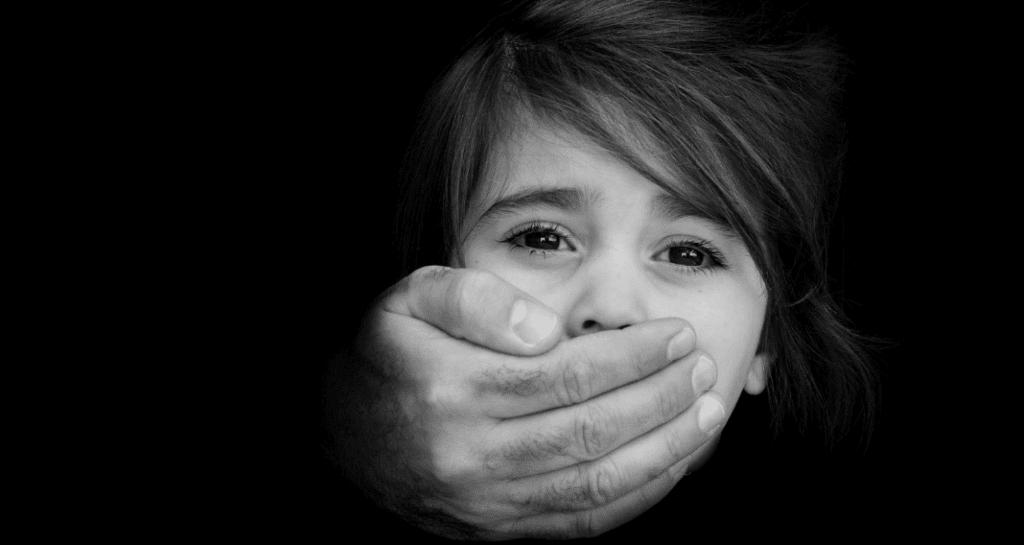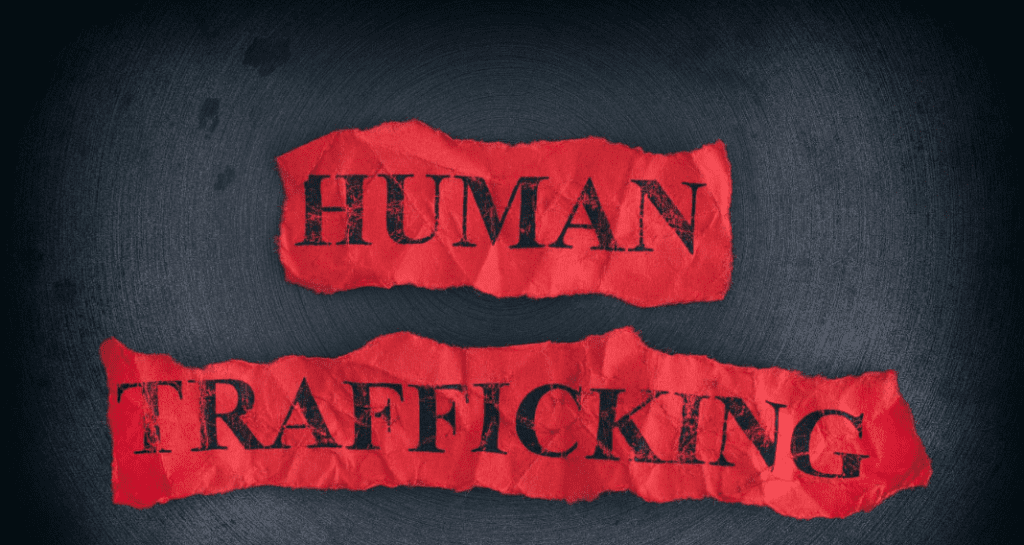 July 30th is World Day Against Trafficking in Persons.
July 30th is World Day Against Trafficking in Persons.
Sex trafficking takes on SO many forms and California is one of the nation’s top destination states for trafficking of human beings.
When I hear sex trafficking, I hear something bigger than me, something that I don’t see in front of me and so there is an “out-of-sight, out-of-mind” stigma to it that I do know doesn’t deserve that. This mentality (guilty as charged) puts us in a place where we think “I can’t make a real difference”.
I have countless stories where I feel I have done something to step in and protect a child that I thought was in danger. I have always had this “sixth sense”, but when I became a mother I feel it 1000 times more. As mothers, we need to be more vigilant not just in protecting our kids, but in protecting the kids of mothers who for whatever reason are unable to protect them. Mothers are pretty amazing for a lot of reasons. Our reflexes, reaction times, our gut and intuition are predominantly right.
 If WE as MOTHERS all used that SAME INTUITION to PROTECT just ONE child. IMAGINE the DIFFERENCE we could MAKE.
If WE as MOTHERS all used that SAME INTUITION to PROTECT just ONE child. IMAGINE the DIFFERENCE we could MAKE.
So I challenge our San Diego Moms community to DO SOMETHING this year. If we all step up and do just one small thing to protect these innocent children and adults being human trafficked we will make a difference.
In order to know how you can help, it is important we understand it. Below you will find information about what human trafficking is, the types of human trafficking, stats, the types of victims, and resources and ways to get involved.
Sex trafficking is VERY REAL.
Of the 16 million trafficking victims exploited for labor, 7.5 million (47%) forced labor victims work in construction, manufacturing, mining, or hospitality. 3.8 million (24%) forced labor victims are domestic workers. 1.7 million (11%) forced labor victims work in agriculture.
 What is Human Trafficking?
What is Human Trafficking?
According to the San Diego County District Attorney’s Office, “Human trafficking is a form of modern-day slavery where perpetrators profit from the sexual exploitation and/or forced labor of men, women, and children. It is a violation of basic human rights, and it is also a crime as defined by U.S. federal law and California state law. Sex trafficking is the exploitation of a person by means including coercion or deceit to engage in commercial sexual activity, prostitution, exotic dancing, or pornography. (When the victim is a minor under the age of 18 years old, sex trafficking does not require force or coercion. Minors cannot legally consent to sexual activity).”
Human Trafficking Facts and Figures
- Human trafficking is not a choice. A person cannot consent to become enslaved.
- Human trafficking is different than smuggling. Smuggling is based on transportation; trafficking is based on exploitation (although the two can occur together).
- Human trafficking does not require that a victim be moved over state or international borders. Human Trafficking is also a domestic issue inside CA state and San Diego County.
- 27 million people are trafficked each year worldwide, with approximately 18,000 victims in the U.S. (U.S. Department of State)
- Human trafficking is one of the most profitable criminal enterprises with estimates of profit worldwide of $32 billion and 9.5 billion annually in the U.S.
- California, a populous border state with a significant immigrant population is one of the nation’s top four destination states for trafficking of human beings.
- San Diego was identified by the FBI as of the top 13 high-intensity child prostitution areas.
- Human trafficking that is based on sexual exploitation and its related forms of pimping and pandering form the majority of criminal prosecutions.
 Human Trafficking is Big Business
Human Trafficking is Big Business
- Human trafficking earns profits of roughly $150 billion a year for traffickers, according to the ILO report from 2014. The following is a breakdown of profits, by sector:
- $99 billion from commercial sexual exploitation
- $34 billion in construction, manufacturing, mining, and utilities
- $9 billion in agriculture, including forestry and fishing
- $8 billion dollars is saved annually by private households that employ domestic workers under conditions of forced labor
What are the warning signs of human trafficking based on sexual exploitation of a minor?
Read through the Warning Signs of Human Trafficking so you can support a child that might potentially be trafficked. Parents, teachers, employers, counselors, nurses, doctors, other professionals, and friends of trafficking victims are often unaware of the abuse that is happening right in front of their eyes.
What Can You Do?
- Become aware and educate yourself as to the facts and myths of human trafficking.
- Save the human trafficking hotline in your phone and post it on any social media that you use to inform others.
- Report suspected human trafficking activity by calling 1-888-3737-888 or texting BeFree (233733).
- Place the human trafficking poster in your place of business to spread awareness.
- Stop the demand for sexual and labor exploitation that constitutes the profit that drives human trafficking, i.e. buying sex, buying cheap labor.
- Educate yourself on the warning signs and red flags of human trafficking.
- Support legislation that holds perpetrators accountable and promotes dignity for victims.
- Support and encourage your local schools to educate their teachers, counselors, health providers, and staff about this topic.
- Support and encourage your local schools to educate children about this topic so they can avoid the pitfalls or ask for help.
- Encourage your civic or faith-based organizations to become educated and educate their members about human trafficking.
- Support victims of human trafficking by welcoming them into our communities and directing them to the professional resources available.
Ways to Get Involved
Prevention
- Protect YOUR children online
- Watch the PSA provided by San Diego ICAC to educate yourself and your kids.
- Help find online predators by submitting a tip today. Contact the San Diego Internet Crimes Against Children at 1-800-843-5678 or visit www.cybertipline.com.
Talk to your kids about the following safety measures:
- Don’t talk to unknown or unfamiliar people.
- Don’t post any personal information on your Facebook that you would not want strangers to see online.
- Don’t believe claims by disguised perpetrators that they are photographers, producers, and others who will make you famous.
- Don’t accept the invitation to “parties” of anyone not in your trusted circle and always let a parent or friend know where you are going.
- Don’t be lured by lines commonly used to lure victims like “You’re pretty. You could make some money,” “I’m here for you”, “it is you and me against the world”, “just do this one thing for me so we can pay the bills”, “I’ll take care of you”.
Think Before You Shop
Consider how you shop (visit disclaimer page) and eat (visit disclaimer page). Who made your clothes? Who prepared your food? Calculate your Slavery Footprint (visit disclaimer page), and know which goods may be produced by child or forced labor (visit disclaimer page).
Volunteer OR Donate to a non-profit in Your Community
Volunteer at one of the organizations listed in the Resource Directory provided by the National Human Trafficking Hotline.
- This online Referral Directory is made up of anti-trafficking organizations and programs that offer emergency, transitional, or long-term services to victims and survivors of human trafficking as well as those that provide resources and opportunities in the anti-trafficking field.
If you can’t volunteer, share the information, and be vigilant with your voice.
Register for Training
OTIP’s National Human Trafficking Training and Technical Assistance Center trains public health professionals and the Office for Victims of Crime Training and Technical Assistance Center (visit disclaimer page) supports the criminal justice system.
Use Your Skills
Can you train or hire survivors? Reach out to potential local partners (visit disclaimer page). Do you work in a school? Propose anti-trafficking protocols (visit disclaimer page). Are you an attorney? Offer pro-bono services (visit disclaimer page). Writing a story? Use media best practices (visit disclaimer page). Work in hospitals or clinics? Encourage your colleagues to register for the SOAR to Health and Wellness training.
Here are some more helpful links the San Diego County Distract Attorney’s Office provided for additional information.
www.protectsandiegokids.org/
www.polarisproject.org/human-trafficking/overview
www.dhs.gov/end-human-trafficking
www.abolishhumantrafficking.com (Find research articles, documentaries & community events)
www.bsccoalition.org
www.ccssd.org
www.generatehope.org
www.nclifeline.org
www.sdyouthservices.org/site/PageServer?pagename=STARS
www.protectoaklandkids.org
www.heat-watch.org
www.sdcda.org/office/girlsonlytoolkit/index.htm
www.survivors4solutions.com
www.alabasterjarproject.org
Sources:
*San Diego County’s District Attorney’s Office
** Human Rights First
***NATIONAL HUMAN TRAFFICKING RESOURCE CENTER (NHTRC) INFORMATION
****Office on Trafficking In Persons
***** National Human Trafficking Hotline


















